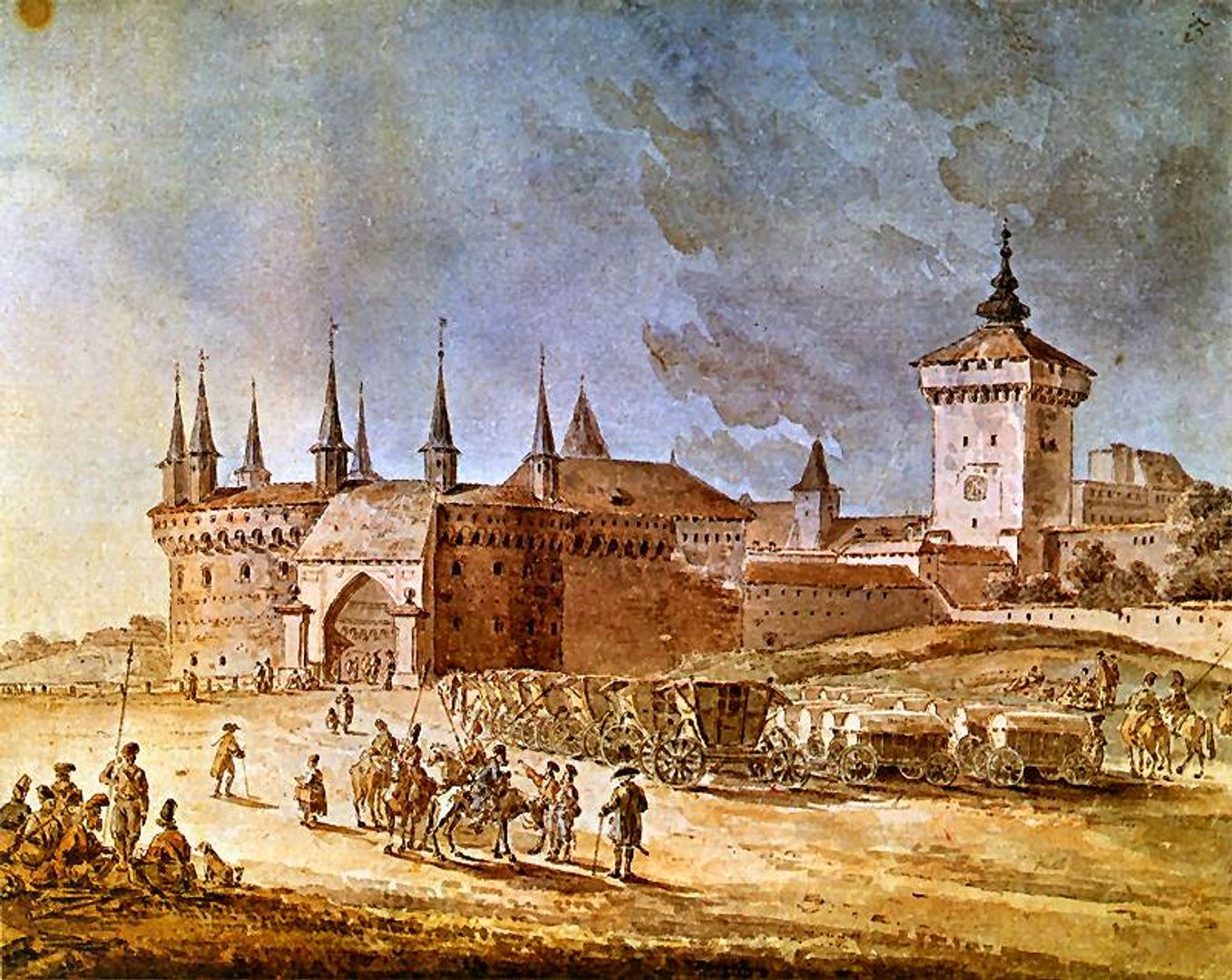The city walls in Krakow
6.87

Overview
The city walls of Krakow, which surrounded the historic Old Town, played a crucial role in the defense of the city. Their construction began after the destruction of Krakow by the Tatar invasion in 1241. Despite the initial lack of fortifications, Prince Leszek the Black authorized the construction of the walls in 1285, and they reached their final form by the first quarter of the 14th century. The defensive architecture consisted of a double wall rising to a height of 7 meters, accompanied by a moat and a lower outer wall. In the 14th century, the walls were dominated by towers, 17 of which were maintained by specific craft guilds, giving the city a unique character. Outer and inner gates, including St. Florian's Gate and St. Nicholas' Gate, served as sturdy access points that were closed at night. The moat was 6 to 10 meters wide and 3.5 meters deep, with its waters sourced from the Royal Młynówka. Unfortunately, from the 17th century onward, the condition of the walls deteriorated, leading to their demolition by order of Emperor Francis I between 1810 and 1814. Professor Feliks Radwański, a defender of the walls, fought for their preservation, resulting in the survival of fragments such as the Barbican and some towers. In the 20th century, the renovation of the Planty Park highlighted the outlines of the former walls and featured pedestals with their depictions, serving as a reminder of the historical significance of Krakow's fortifications. In 2007, the "Defensive Walls" tourist route was opened, attracting visitors interested in the rich history and architecture of this remarkable site.
Location
Tickets
Powered by GetYourGuide
2025 Wizytor | All Rights Reserved